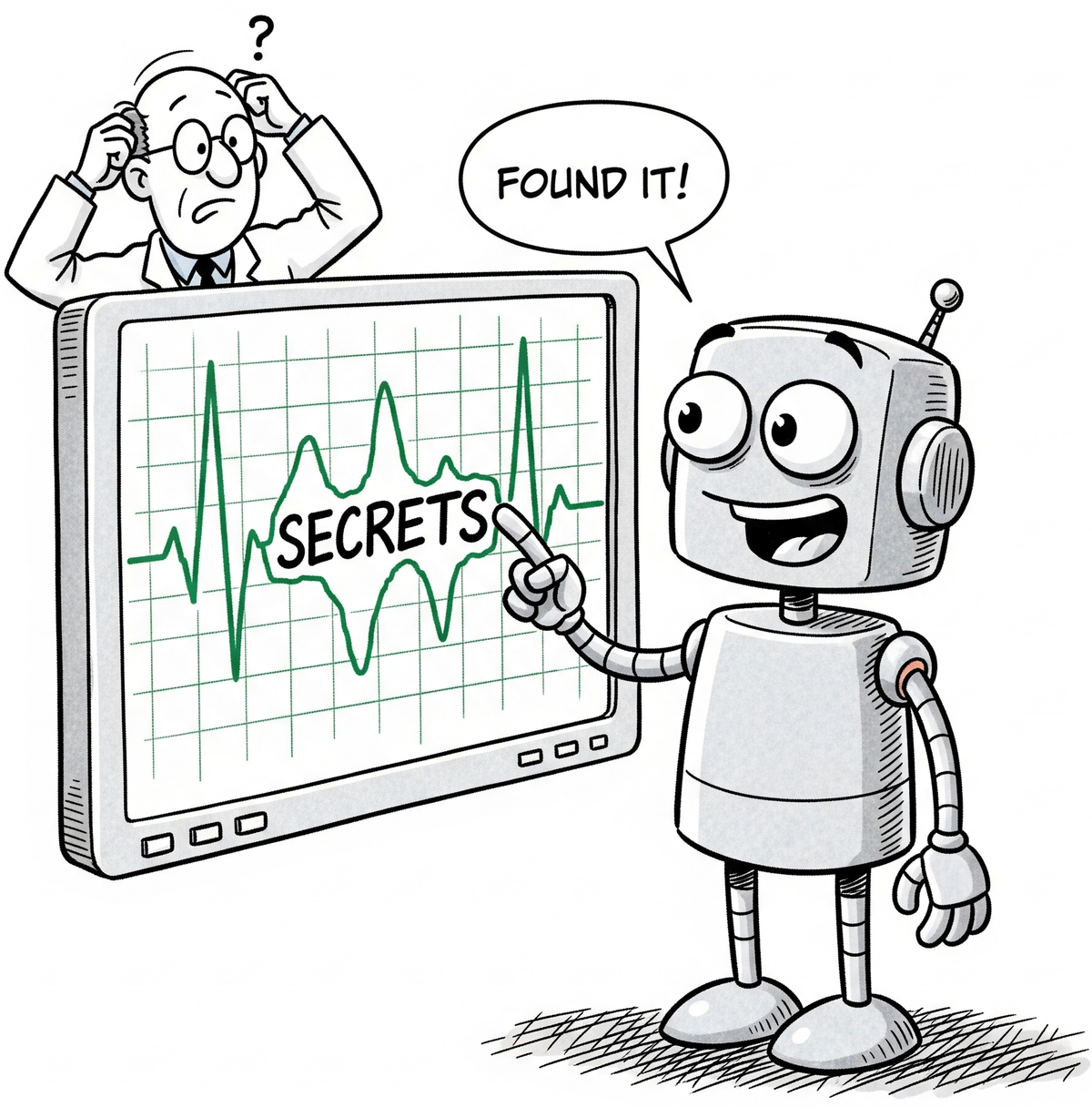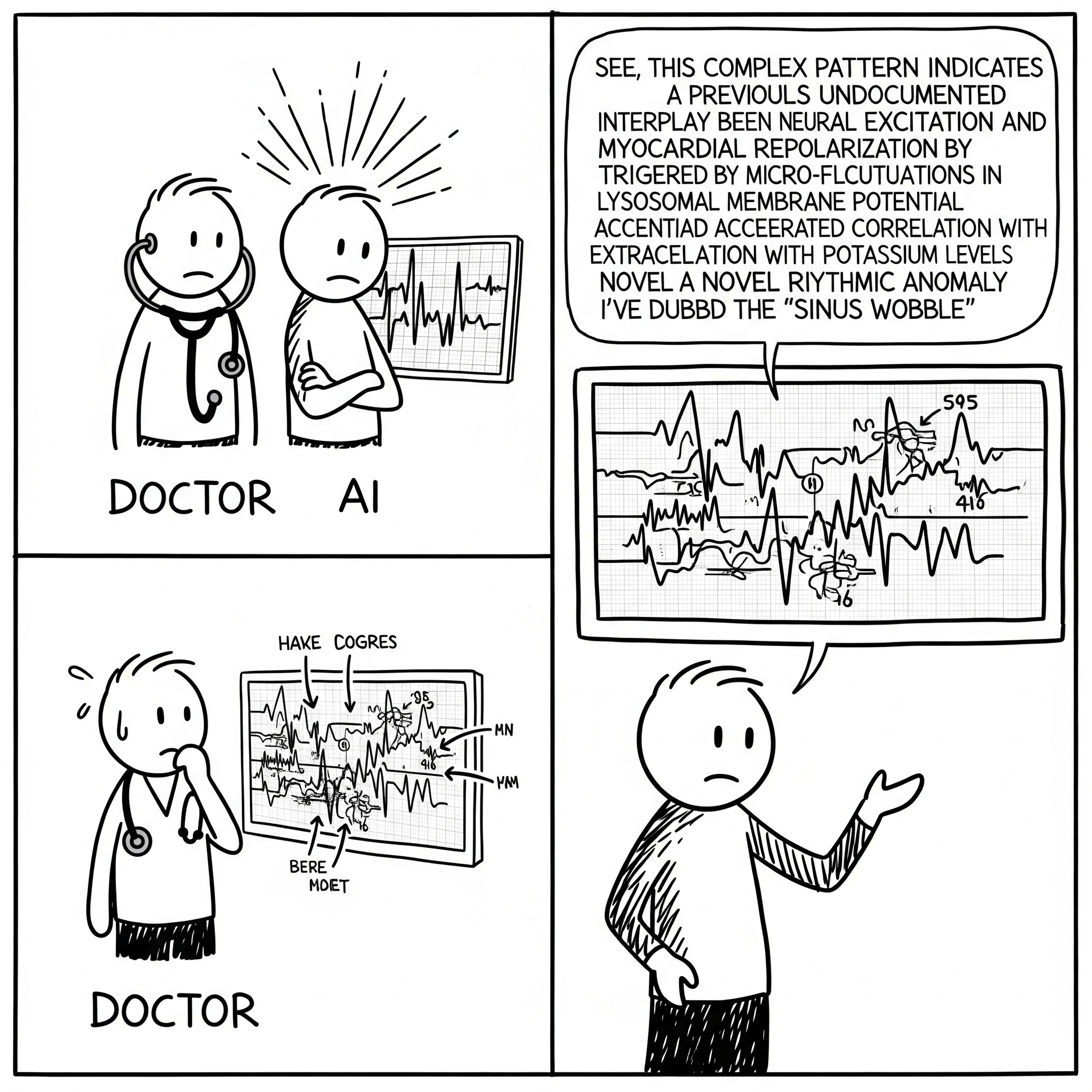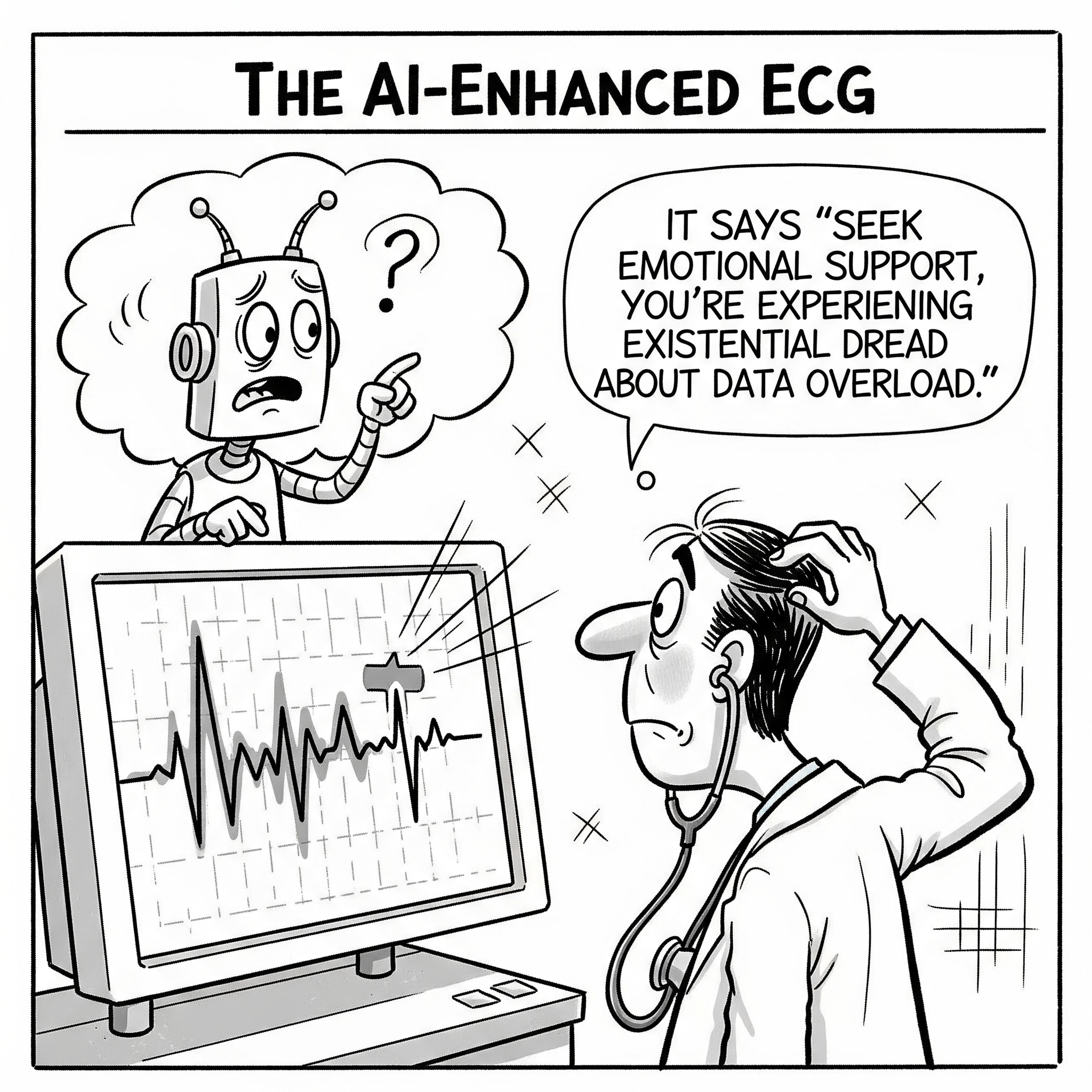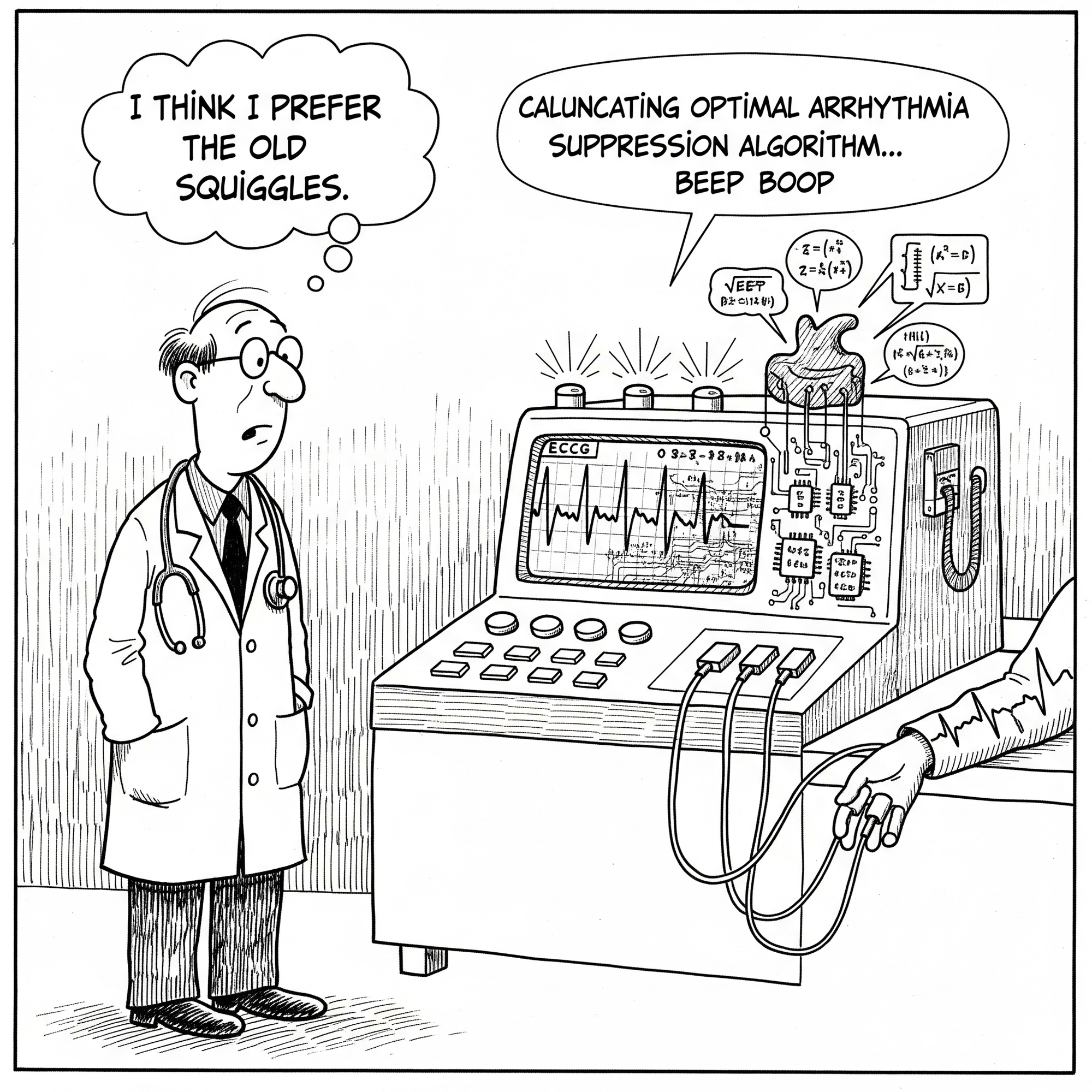How AI is Decoding the ECG's Secret Language

In the history of medical diagnostics, few tools have had a more profound and enduring impact than the electrocardiogram, or ECG. For over a century, this machine—with its signature spidery line on a grid of paper—has been a workhorse of medicine. It tells a doctor the heart’s rhythm, flagging a flutter or the grim signature of a heart attack. But for all its ubiquity, the ECG has always been considered a limited tool. It could answer a specific set of questions, but it could not measure the heart’s true pumping power—the ejection fraction.
That metric was reserved for a different machine, the echocardiogram, an expensive and specialised ultrasound device. The two machines existed in separate spheres: one for the electrical, one for the mechanical. It was a clear, unassailable division of labor.
But a new study from computer scientists has shattered that old paradigm. They have found a way to make the ECG see what it was never meant to: a patient's ejection fraction. The finding is not a simple breakthrough; it is a profound lesson in how technology can find new truths in old things.
A Problem of Data
For decades, researchers tried to find a link between the ECG's electrical signals and the heart's mechanical pumping. They used statistical models, trying to correlate a handful of specific ECG features with a patient's ejection fraction. The approach was logical but flawed. The heart is not a simple machine, and the relationship between its electrical signals and its physical function is far too complex for a handful of data points to capture. The results were inconsistent, and the research was largely abandoned. The conclusion was firm: the ECG simply could not do the job.

But the scientists at West Virginia University, in a study published in Scientific Reports, approached the problem from a new angle. They understood that the problem wasn't the ECG itself, but the way it was being read. They turned to deep learning, a branch of artificial intelligence that thrives on complexity and nuance. A deep-learning network, unlike a traditional algorithm, is not given a set of rules. It is given a goal and a massive dataset of examples. It is then left to teach itself, finding patterns too subtle for a human eye to ever notice.
The researchers had a massive, anonymized dataset of over 55,500 patients. For each patient, they had both a 12-lead ECG and a corresponding echocardiogram that measured their true ejection fraction. They fed this paired data into a deep-learning model known as ResNet. The AI learned by example, looking at tens of thousands of hearts, comparing the electrical pattern to the mechanical reality.
The result was a stunning validation of their hypothesis. The AI had taught itself to be a "virtual echocardiogram." It could look at an ECG printout and, without any other information, predict a patient's ejection fraction with a high degree of accuracy. It achieved an AUROC of 0.8665, a measure of diagnostic accuracy that is considered excellent in the field. The AI had found a new, hidden language in the ECG's squiggles, turning a tool of rhythm into one of power.

The QRS Complex and the New Diagnostic Frontier
The researchers took their findings a step further. Using an interpretability analysis, they were able to peer into the AI's "mind" and discover which parts of the ECG were most important for its prediction. The AI's focus was on the QRS region, which represents the main electrical event of the heartbeat . Specifically, the most valuable information was found in leads I, aVR, V2, and V3. The study further demonstrated that the full 12-lead ECG was necessary for the highest degree of accuracy, as a single lead or even a two-lead combination simply did not provide the rich, complete picture the AI needed.
This discovery is a classic story of modern innovation. The true breakthrough was not in building a new, more complex machine. It was in finding a new way to understand an old one. This AI-powered approach turns the simple, universally available ECG into a powerful screening tool. A patient coming in with the subtle symptoms of heart failure could receive an ECG, and the AI's analysis could provide an immediate, low-cost risk assessment. This would allow doctors to fast-track patients with a low predicted ejection fraction to a full echocardiogram and specialist care, potentially catching a life-threatening condition before it's too late. It is a story about using a new kind of intelligence to unlock an old secret, reminding us that sometimes the most valuable insights are found not by looking for new data, but by looking at old data in a new way.

Comments ()